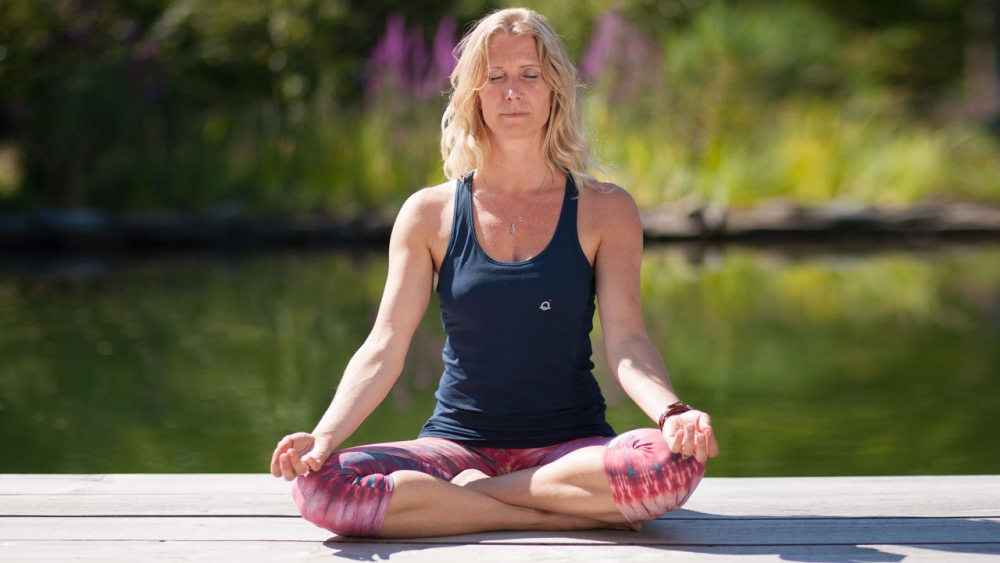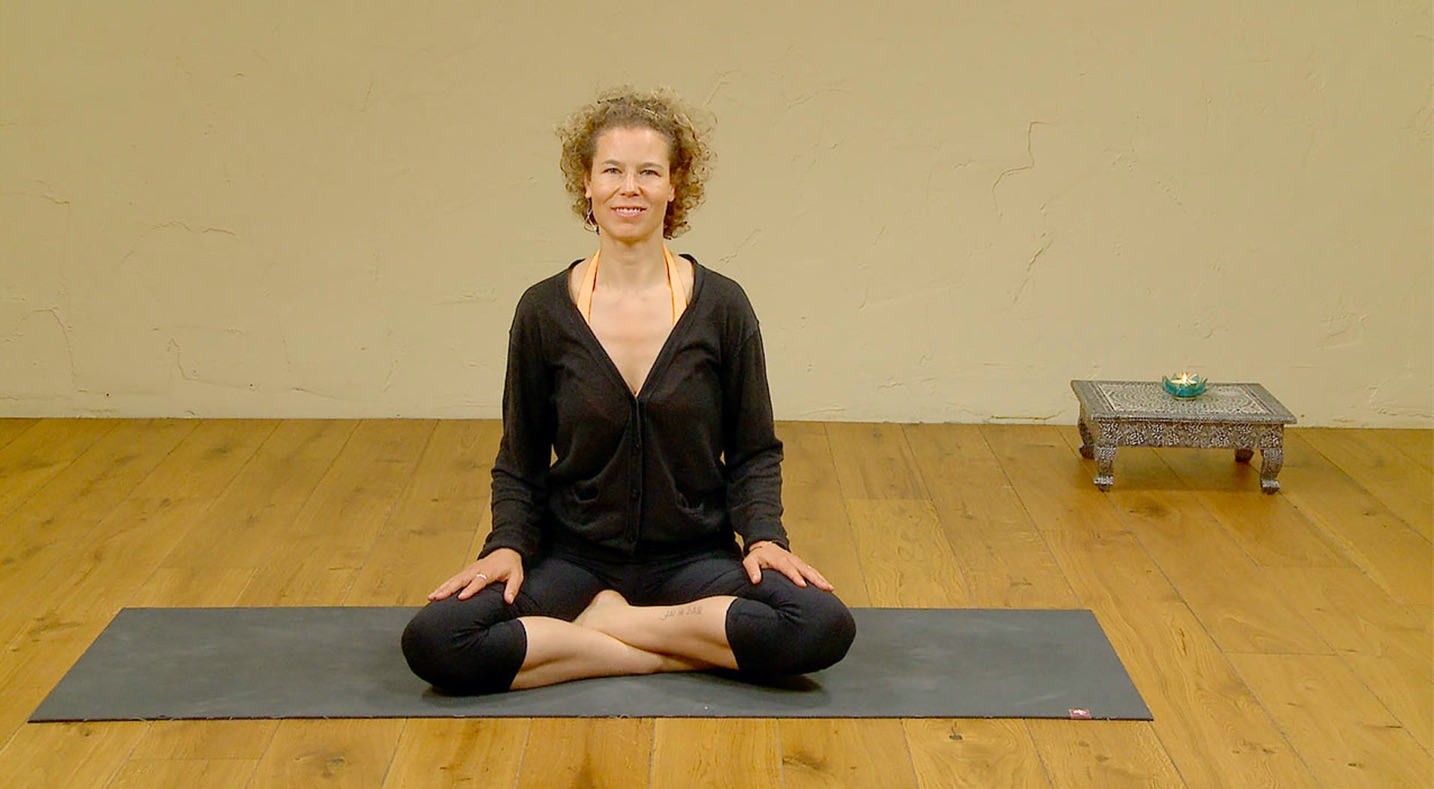Samavritti = Equal movement
The purpose of this Pranayama exercise is to equalize the four components of the breath:
Inhalation (puraka)
Internal retention (antara-khumbaka)
Exhalation (rechaka)
External retention (bahya-khumbaka)
The benefits include:
- Refining the breath and awareness of prana flow.
- Calming the body
- Focusing the mind helping to remove distractions making it easier to concentrate and meditate.
How to practise Samavritti
Find a comfortable sitting position – the posture should allow your spine to be upright so you can use a block or cushion to sit on, or a chair. Rest the back of your hands on your legs, palms up with the tips of the index finger and thumb touching (Jnana Mudra).
Spend a few minutes watching your natural breath. Without changing anything observe the natural inhalation, the exhalation and the natural pauses between each breath.
- Begin with an exhale for the count of four
- Hold on the exhale for the count of four
- Inhale for the count of four
- Hold on the inhale for the count of four
After a few rounds you could take the count up to 6, but you can stay at 4 or if you find you are struggling with the breath simply lower it to 2 or 3 until it feels easier.
Try to cultivate the same quality of breath at the beginning, middle and end of the count.
The breath should not be forced or strained during Pranayama.
After several rounds sit and observe how your body and mind taking Savasana.
Beginners’ notes
Samavritti can also be practised without the retentions (i.e. not holding the breath), just equalizing the inhalation and exhalation. It is fine to drop the retentions in this practice if they are uncomfortable. You can build up by keeping the inhalation and exhalation both on a count of 4 and the retentions shorter (for example for a count of 2) until they feel more natural.
Precautions
Never strain the breath in Pranayama.
If you are pregnant, practise equalizing the inhale and exhale without the retentions.
If you have high blood pressure, lung, heart, eye or ear problems it’s advised not to hold the breath after the inhale.
If you have low blood pressure it’s advised not to hold the breath after the exhale.
Samavritti – equal breath
Balance out your inhalations and exhalations to help to create equanimity of mind and energy in this practice with Sandra Carson.


